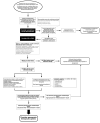Clinical and Laboratory Aspects of Insulin Autoantibody-Mediated Glycaemic Dysregulation and Hyperinsulinaemic Hypoglycaemia: Insulin Autoimmune Syndrome and Exogenous Insulin Antibody Syndrome
- PMID: 33343044
- PMCID: PMC7731936
- DOI: 10.33176/AACB-20-00008
Clinical and Laboratory Aspects of Insulin Autoantibody-Mediated Glycaemic Dysregulation and Hyperinsulinaemic Hypoglycaemia: Insulin Autoimmune Syndrome and Exogenous Insulin Antibody Syndrome
Abstract
Autoimmune glycaemic dysregulation and hyperinsulinaemic hypoglycaemia mediated by insulin autoantibodies is an increasingly recognised but controversial phenomenon described in both exogenous insulin naïve (insulin autoimmune syndrome) and exposed (exogenous insulin antibody syndrome) individuals. There has been a significant proliferation of case reports, clinical studies and reviews in the medical literature in recent years which have collectively highlighted the discrepancy between experts in the field with regard to the nomenclature, definition, proposed pathophysiology, as well as the clinical and biochemical diagnostic criteria associated with the condition. The essential characteristics of the condition are glycaemic dysregulation manifesting as episodes of hyperglycaemia and unpredictable hyperinsulinaemic hypoglycaemia associated with high titres of endogenous antibodies to insulin. Although the hypoglycaemia is often life-threatening and initiation of targeted therapies critical, the diagnosis is often delayed and attributable to various factors including: the fact that existence of the condition is not universally accepted; the need to exclude surreptitious causes of hypoglycaemia; the diverse and often complex nature of the glycaemic dysregulation; and the challenge of diagnostic confirmation. Once confirmed, the available therapeutic options are expansive and the reported responses to these therapies have been variable. This review will focus on our evolving understanding, and the associated diagnostic challenges - both clinical and laboratory - of this complex condition.
Conflict of interest statement
Competing Interests: None declared.
Figures

Similar articles
-
Autoimmune hypoglycaemia caused by alpha-lipoic acid: a rare condition in Caucasian patients.Endocrinol Diabetes Metab Case Rep. 2018;2018:18-0011. doi: 10.1530/EDM-18-0011. Epub 2018 Dec 11. Endocrinol Diabetes Metab Case Rep. 2018. PMID: 30532998 Free PMC article.
-
A novel approach to a rare case of non-islet cell hypoglycaemia.Endocrinol Diabetes Metab Case Rep. 2021 Jul 1;2021:21-0040. doi: 10.1530/EDM-21-0040. Online ahead of print. Endocrinol Diabetes Metab Case Rep. 2021. PMID: 34236039 Free PMC article.
-
Spontaneously remitting insulin autoimmune syndrome in a patient taking alpha-lipoic acid.Endocrinol Diabetes Metab Case Rep. 2018;2018:18-0122. doi: 10.1530/EDM-18-0122. Epub 2018 Dec 11. Endocrinol Diabetes Metab Case Rep. 2018. PMID: 30532997 Free PMC article.
-
The insulin autoimmune syndrome (IAS) as a cause of hypoglycaemia: an update on the pathophysiology, biochemical investigations and diagnosis.Clin Chem Lab Med. 2016 Nov 1;54(11):1715-1724. doi: 10.1515/cclm-2015-1255. Clin Chem Lab Med. 2016. PMID: 27071154 Review.
-
Hyperinsulinaemic hypoglycaemia in children and adults.Lancet Diabetes Endocrinol. 2017 Sep;5(9):729-742. doi: 10.1016/S2213-8587(16)30323-0. Epub 2016 Dec 1. Lancet Diabetes Endocrinol. 2017. PMID: 27915035 Review.
Cited by
-
Characteristics of OGTT and Correlation Between the Insulin to C-Peptide Molar Ratio, HOMA-IR, and Insulin Antibodies in T2DM Patients.Diabetes Metab Syndr Obes. 2022 Aug 9;15:2417-2425. doi: 10.2147/DMSO.S373475. eCollection 2022. Diabetes Metab Syndr Obes. 2022. PMID: 35971523 Free PMC article.
-
Individualized intensive insulin therapy of diabetes: Not only the goal, but also the time.World J Diabetes. 2024 Jan 15;15(1):11-14. doi: 10.4239/wjd.v15.i1.11. World J Diabetes. 2024. PMID: 38313848 Free PMC article.
-
Polyethylene Glycol Precipitation to Avoid Misdiagnosis of Insulin Autoimmune Syndrome: A Case Report and Testing Pathway in Medical Laboratories.Ann Lab Med. 2022 Sep 1;42(5):609-611. doi: 10.3343/alm.2022.42.5.609. Ann Lab Med. 2022. PMID: 35470281 Free PMC article. No abstract available.
-
Rational Engineering of Islet Tolerance via Biomaterial-Mediated Immune Modulation.J Immunol. 2024 Jan 15;212(2):216-224. doi: 10.4049/jimmunol.2300527. J Immunol. 2024. PMID: 38166244 Free PMC article. Review.
-
Exogenous insulin antibody syndrome in a patient with diabetes secondary to total pancreatectomy.Diabetol Int. 2022 Dec 24;14(2):211-216. doi: 10.1007/s13340-022-00611-z. eCollection 2023 Apr. Diabetol Int. 2022. PMID: 37090132 Free PMC article.
References
-
- Ismail AA. The insulin autoimmune syndrome (IAS) as a cause of hypoglycaemia: an update on the pathophysiology, biochemical investigations and diagnosis. Clin Chem Lab Med. 2016;54:1715–24. - PubMed
-
- Hirata Y, Ishizu H, Ouchi N, Motomura S, Abe Y, Hara M, et al. Insulin autoimmunity in a case of spontaneous hypoglycemia. J Japan Diabetes Soc. 1970;13:312–20.
-
- Archambeaud-Mouveroux F, Huc MC, Nadalon S, Fournier MP, Canivet B. Autoimmune insulin syndrome. Biomed Pharmacoth. 1989;43:581–6. - PubMed
-
- Klein RF, Seino S, Sanz N, Nolte MS, Vinik AI, Karam JH. High performance liquid chromatography used to distinguish the autoimmune hypoglycemia syndrome from factitious hypoglycemia. J Clin Endocrinol Metab. 1985;61:571–4. - PubMed
Publication types
LinkOut - more resources
Full Text Sources
